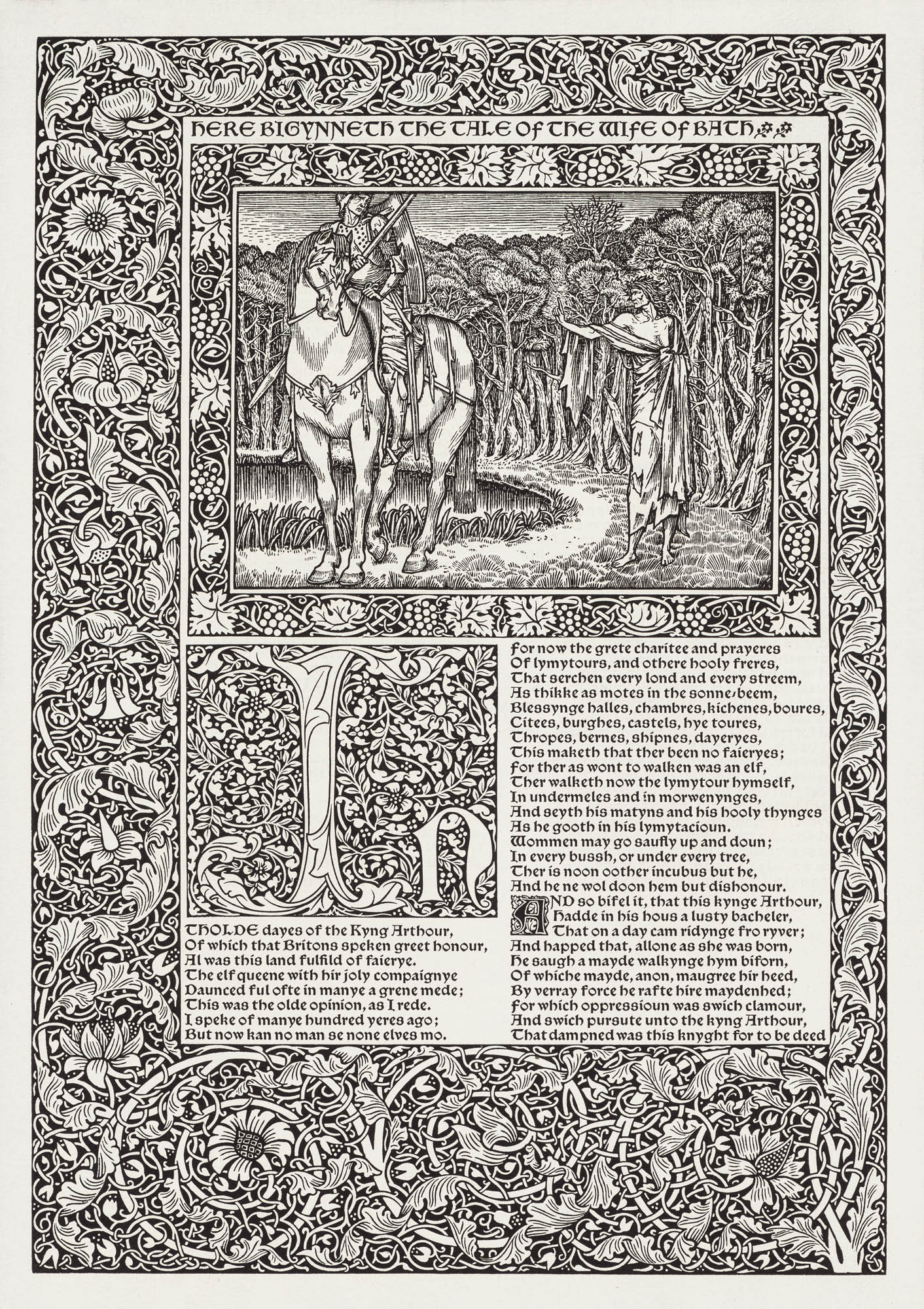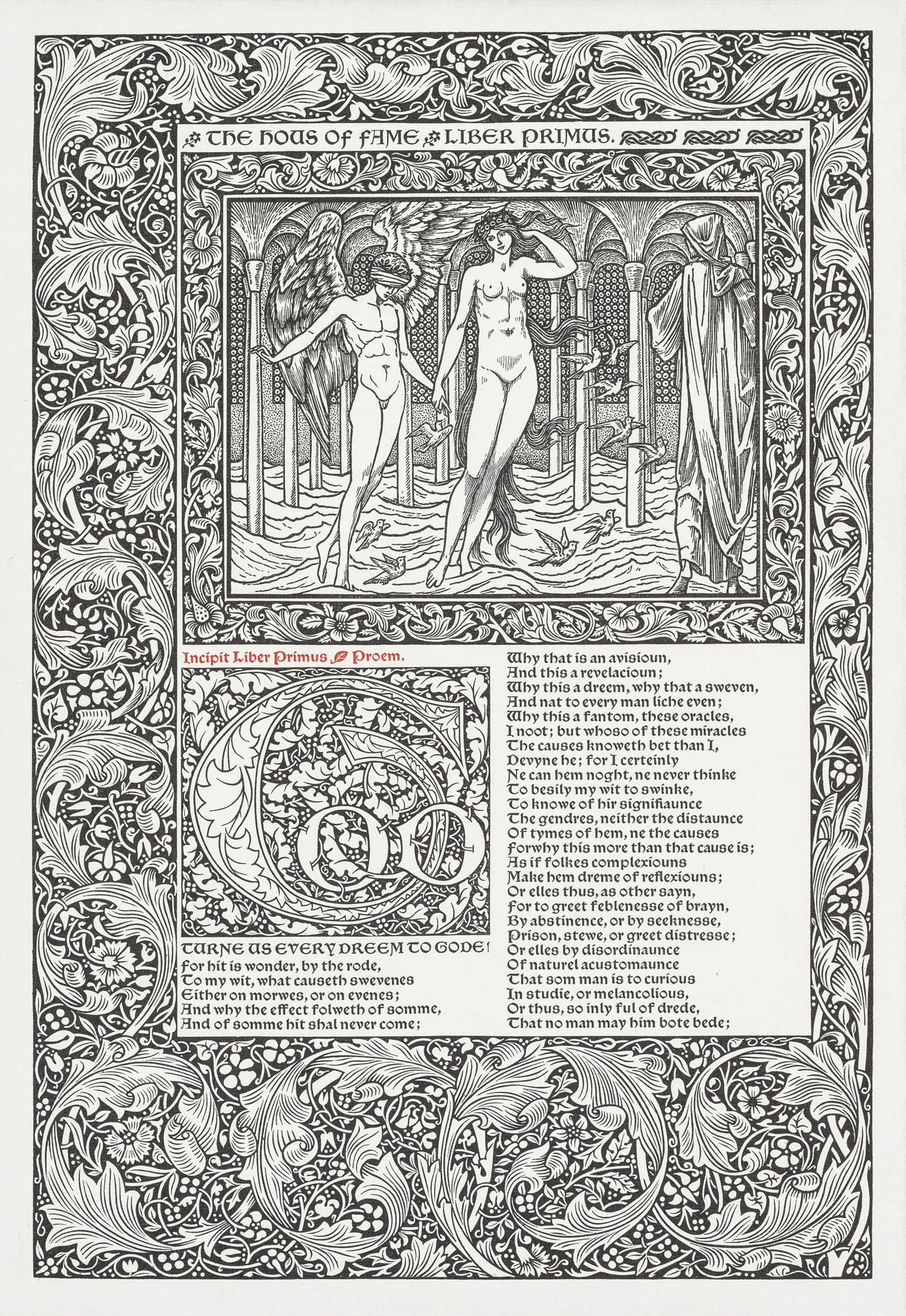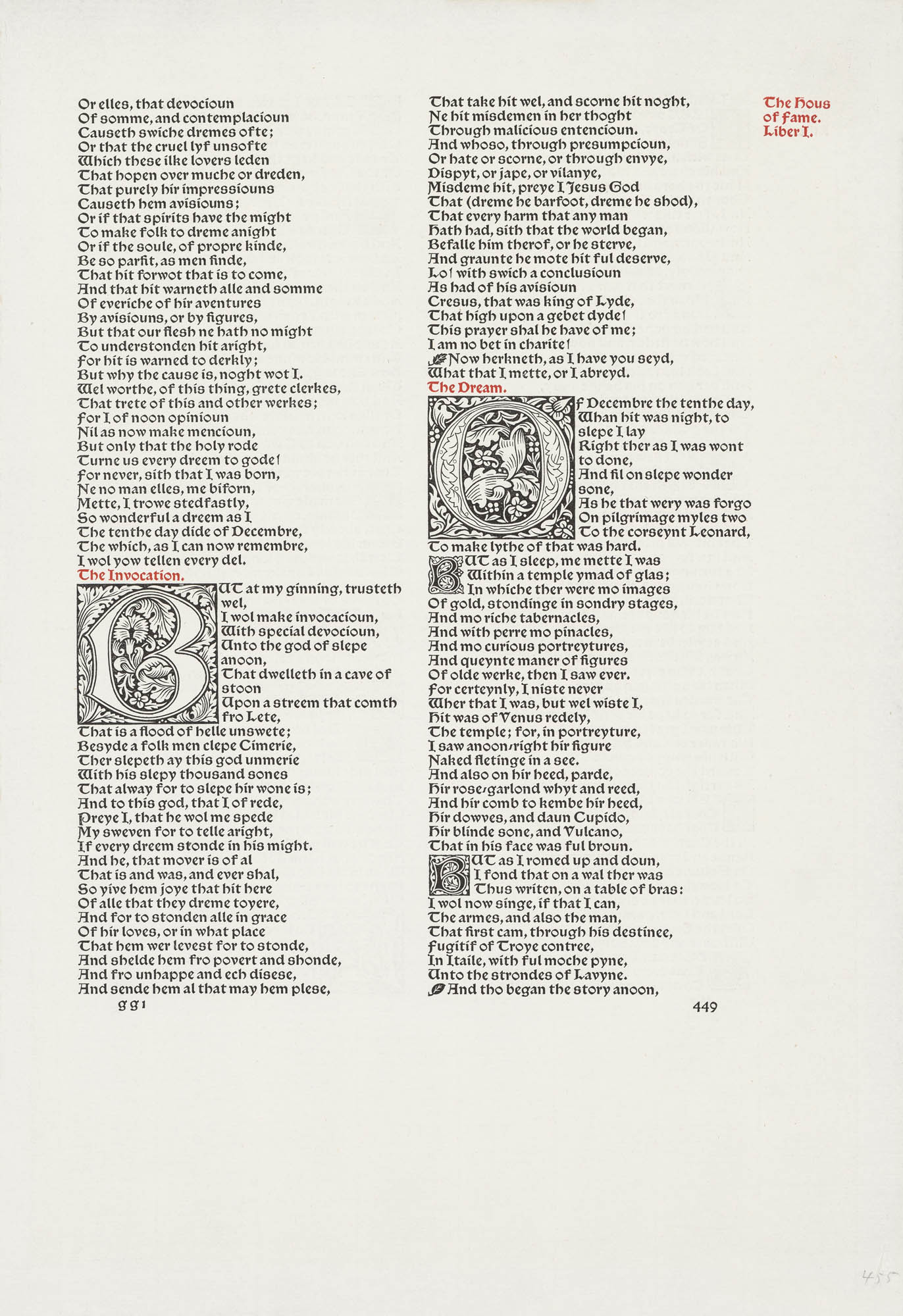8031 Zurich
8031 Zurich
8008 Zürich
The book The Works of Geoffrey Chaucer, produced by William Morris (1834–1896) at Kelmscott Press, which he founded outside of London expressly for that purpose, is considered a masterpiece. Morris approached book art, like the other applied arts, with the aim of combining beauty and practicality down to the last detail in handcrafted products.
In 1891, the year in which he founded Kelmscott Press, William Morris already intended to publish the works of the Middle English poet in a new edition. Several years would pass, however, before this project, the publishing house’s largest, was completed. During this time, the artist Edward Burne-Jones created eighty-seven woodcut illustrations, while Morris himself designed the ornamental borders, frames, countless initial letters and words, as well as the title page. Beginning in 1895, the Kelmscott Chaucer was printed in Hammersmith in a typeface designed by Morris—the so-called Chaucer type—on two Albion hand printing presses. The typeface was the result of Morris’s wish to create a clearly legible Gothic script. Morris also pondered over the ideal spacing between the words, letters, and lines of type, as well as over the width of the borders. He sought out the best possible ink and produced a handmade linen paper. For approximately 48 of the 440 copies (425 printed on paper and fifteen on parchment), he designed an embossed white leather binding whose style was based on fifteenth-century bookbinding. The integration of illustrations, text, borders, and initial letters, as well as the red ink used in the subheadings and the table of contents, was also reminiscent of the medieval book art and early European book printing after which they were modelled. All of these elements formed a part of Morris’s vision of the “ideal book” in the spirit of the Arts and Crafts movement. (Rhiannon Ash)
Gestaltung und Schriftentwurf: William Morris
Illustration: Sir Edward Burne-Jones
Autorschaft: Geoffrey Chaucer
Herausgabe: F.S. Ellis
Druckerei: Kelmscott Press, Hammersmith, GB
Holzschnitt: W. H. Hooper
Material/Technik: Büttenpapier, Buchdruck / Schrift: Chaucer-Type
42.3 × 29.2 cm
Eigentum: Museum für Gestaltung Zürich / ZHdK
John Dreyfus, The Kelmscott Press, in: Linda Parry (Hg.), William Morris, Ausst.-Kat. Victoria and Albert Museum 9. Mai–1. September 1996, London 1996, S. 310–316.
William S. Peterson und Sylvia Peterson Holton, The Kelmscott Chaucer: A census, New Castle 2011.
William S. Peterson, The Kelmscott Press: A History of William Morris’s Typographical Adventure, Oxford 1991.
A note by William Morris on his aims in founding the Kelmscott Press together with a short description of the press by S. C. Cockerell, and an annotated list of the books printed thereat, Hammersmith 1898.
Buch, Titelseite, The Works of Geoffrey Chaucer, 1896, Gestaltung und Schriftentwurf: William Morris
Abbildung: Museum für Gestaltung Zürich / ZHdK
Buch, Einzelseite, The Works of Geoffrey Chaucer – Here bigynneth the tale of the wife of Bath, 1896, Gestaltung und Schriftentwurf: William Morris, Illustration: Sir Edward Burne-Jones
Abbildung: Museum für Gestaltung Zürich / ZHdK
Buch, Einzelseite, The Works of Geoffrey Chaucer – The hous of fame. Liber primus., 1896, Gestaltung und Schriftentwurf: William Morris, Illustration: Sir Edward Burne-Jones
Abbildung: Museum für Gestaltung Zürich / ZHdK
Buch, Einzelseite, The Works of Geoffrey Chaucer – The hous of fame. Liber 1., 1896, Gestaltung und Schriftentwurf: William Morris
Abbildung: Museum für Gestaltung Zürich / ZHdK
William Morris (1834–1896) attended to every last detail of his books, which he had printed on the hand press at his own Kelmscott Press. Woodcuts, vine-decorated borders, and illuminated initials adorn his stories or those of his favorite authors. Morris also designed typefaces, looking to examples of medieval book art and early book printing for inspiration. Morris’s books then went on to became models for others—for example the students at the Kunstgewerbeschule Zürich.









